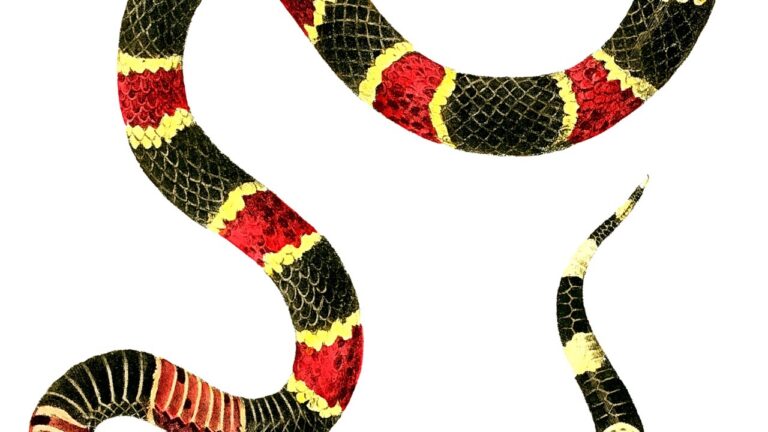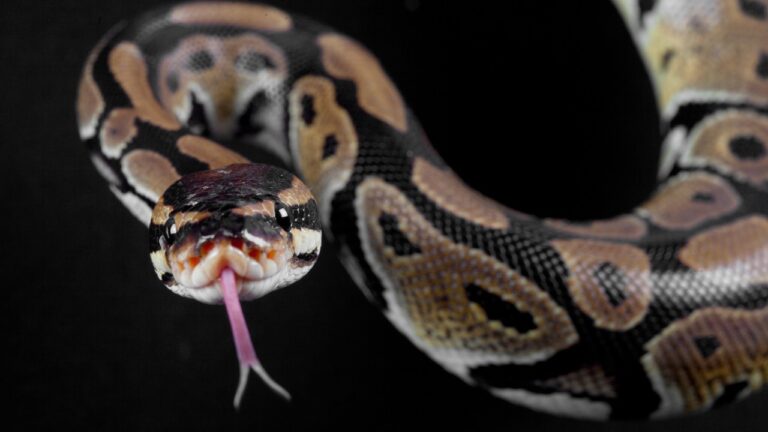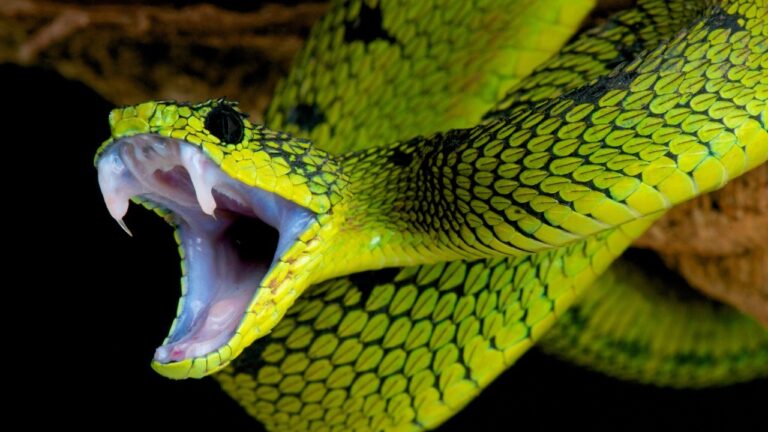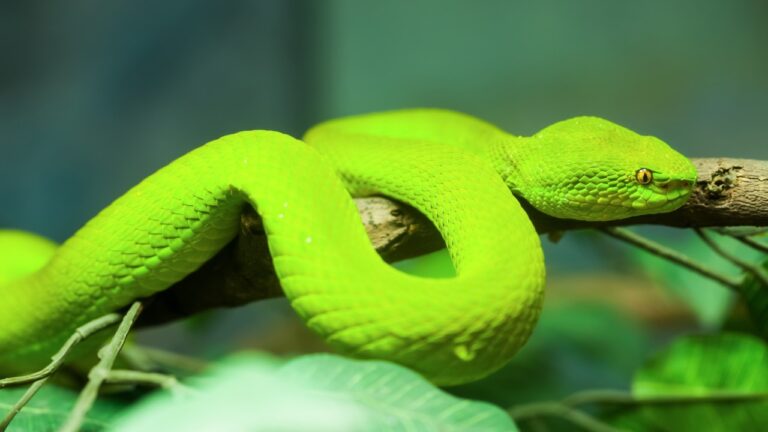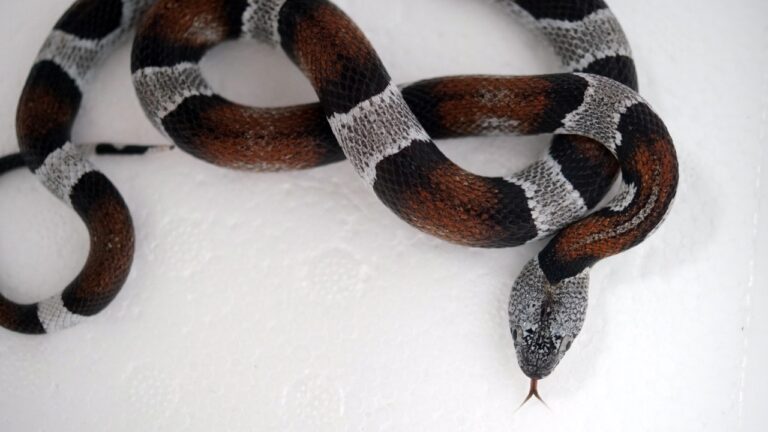Snake Respiratory Infection: Understanding Specialized Health Conditions
Overview of snake respiratory infections
When it comes to the health of our slithering friends, snake respiratory infections are a topic of great concern. These specialized health conditions can have a significant impact on the well-being of snakes, making it crucial for snake owners and enthusiasts to understand their causes, symptoms, and treatment options.
Respiratory infections in snakes can be caused by a variety of factors, ranging from environmental conditions to bacterial or viral pathogens. These infections primarily affect the respiratory system of the snake, including the lungs and airways.
To properly address snake respiratory infections, it is essential to have a comprehensive understanding of the condition. By familiarizing ourselves with the intricacies of these infections, we can ensure that our scaly companions receive the care and treatment they need in a timely manner.
In the following sections, we will delve into the details of snake respiratory infections, exploring their causes, symptoms, diagnosis, treatment, and prevention. By the end of this article, you will be equipped with the knowledge to identify and address respiratory infections in snakes effectively.
So let us embark on this journey to unravel the mysteries of snake respiratory infections, ensuring the well-being and longevity of our beloved serpentine friends.
Understanding Snake Respiratory Infections
Snake respiratory infections can be a concerning and complex health condition that affects our slithering companions. To properly address and manage these infections, it is crucial to have a comprehensive understanding of their causes, symptoms, and the diagnostic process involved.
Causes of Snake Respiratory Infections
Snake respiratory infections can be caused by a variety of factors, including both infectious and non-infectious agents. Infectious agents such as bacteria, viruses, and fungi can invade a snake’s respiratory system and lead to infection. These agents can be transmitted through direct contact with infected snakes, contaminated objects, or even through the air. Some specific examples of infectious agents that can cause respiratory infections in snakes include snake inclusion body disease, snake infectious stomatitis, and snake septicemia.
On the other hand, non-infectious factors can also contribute to the development of respiratory infections in snakes. These factors may include environmental stressors such as improper temperature or humidity levels, poor ventilation in the enclosure, or exposure to irritants like dust or chemicals. Additionally, underlying health issues, such as snake kidney disease or snake neurological disorders, can weaken a snake’s immune system, making them more susceptible to respiratory infections.
Symptoms and Signs
Identifying the symptoms and signs of a respiratory infection in snakes is crucial for early detection and prompt treatment. While the specific symptoms can vary depending on the severity and type of infection, there are some common signs to look out for. These signs may include:
- Wheezing or audible breathing sounds
- Nasal discharge that may be clear, cloudy, or discolored
- Open-mouth breathing or excessive gaping
- Lethargy or decreased activity levels
- Loss of appetite or refusal to eat
- Weight loss
- Coughing or sneezing
- Unusual head movements or bobbing
If you observe any of these symptoms in your snake, it is crucial to seek veterinary assistance promptly to initiate appropriate treatment.
Diagnosing Snake Respiratory Infections
Proper diagnosis is essential to effectively treat and manage snake respiratory infections. When you visit a veterinarian, they will conduct a thorough examination of your snake, taking into account the history, clinical signs, and any relevant information you provide. To confirm the presence of a respiratory infection, the veterinarian may perform various diagnostic tests, including:
- Physical examination: The veterinarian will examine your snake’s respiratory system, looking for any abnormalities, such as increased mucus, redness, or swelling.
- Radiography: X-rays or radiographs can be useful in visualizing the internal structures of the snake’s respiratory system, helping to identify any signs of infection, inflammation, or other abnormalities.
- Culture and sensitivity: This involves taking samples from the snake’s respiratory tract, such as swabs or washes, and sending them to a laboratory for analysis. The laboratory can identify the specific infectious agents involved and determine which antibiotics or antifungal medications are most effective against them.
- Blood tests: Blood tests can provide valuable information about the overall health of the snake and help detect any underlying issues that may be contributing to the respiratory infection.
By combining these diagnostic approaches, veterinarians can accurately diagnose snake respiratory infections and develop an appropriate treatment plan tailored to the individual snake’s needs.
Now that we have a deeper understanding of the causes, symptoms, and diagnostic process of snake respiratory infections, let’s explore the treatment and care necessary to help our scaly friends recover.
Treatment and Care
When it comes to treating and caring for snakes with respiratory infections, veterinary assistance is crucial. These specialized health conditions require professional expertise and guidance to ensure the best possible outcome for the snake’s well-being.
Veterinary Assistance
Seeking the help of a reptile veterinarian is strongly recommended if you suspect your snake has a respiratory infection. These professionals have the knowledge and experience to diagnose and treat the condition effectively. They can conduct thorough examinations, perform diagnostic tests, and develop a tailored treatment plan based on the specific needs of your snake.
Medications and Treatments
Once a diagnosis has been made, the veterinarian may prescribe medications to alleviate the symptoms and combat the infection. Antibiotics are commonly used to target the bacterial component of respiratory infections. These medications may need to be administered orally, topically, or through injections, depending on the severity of the infection and the species of snake.
In addition to medications, supportive treatments such as nebulization therapy or oxygen therapy may be recommended to help improve the snake’s respiratory function. These treatments can assist in reducing inflammation and promoting healing in the respiratory system.
Quarantine and Isolation
To prevent the spread of respiratory infections to other snakes in your collection, it is essential to quarantine the affected snake. Isolating the infected individual in a separate enclosure can minimize the risk of transmission. This measure is particularly crucial if you have multiple snakes or if you frequently handle and interact with other reptiles.
During the quarantine period, it is essential to maintain strict hygiene practices. Regularly clean and disinfect the enclosure, accessories, and any items that come into contact with the infected snake. This will help prevent the spread of the infection and reduce the risk of reinfection.
Remember, treating and caring for a snake with a respiratory infection requires a combination of veterinary expertise, appropriate medications, and diligent quarantine and isolation practices. By taking these necessary steps, you can give your snake the best chance of recovering from this specialized health condition.
If you have any further questions about snake respiratory infections, please refer to the Common Questions section.
Prevention and Maintenance
When it comes to the well-being of your scaly companion, prevention and maintenance play a vital role in keeping them healthy and thriving. By implementing proper husbandry practices, maintaining clean and appropriate enclosures, and scheduling regular health check-ups, you can significantly reduce the risk of snake respiratory infections and ensure your snake’s overall well-being.
Proper Husbandry Practices
One of the cornerstones of preventing snake respiratory infections is the implementation of proper husbandry practices. This involves creating an environment that closely mimics the natural habitat of your snake, providing them with the right temperature, humidity levels, and appropriate hiding spots. Ensuring that your snake’s enclosure is spacious enough for them to move around comfortably is also crucial in promoting their respiratory health.
To promote a healthy respiratory system, proper ventilation within the enclosure is essential. Adequate airflow helps prevent the buildup of stagnant air, reducing the risk of respiratory infections. Additionally, maintaining appropriate temperature and humidity levels specific to your snake species is paramount. Researching and understanding the specific requirements of your snake will enable you to create a suitable environment that supports their respiratory health.
Maintaining Clean and Appropriate Enclosures
Maintaining a clean and hygienic enclosure is another crucial aspect of preventing snake respiratory infections. Regular cleaning not only ensures a healthy environment for your snake but also helps eliminate potential sources of respiratory irritants and pathogens.
Regularly removing waste, uneaten food, and shedding skin from the enclosure is essential in preventing the accumulation of bacteria and other harmful substances. Using appropriate disinfectants specifically formulated for reptile enclosures will help keep the environment clean and free from potential respiratory threats.
Furthermore, providing clean and fresh water is vital for your snake’s overall health. Regularly replacing the water and cleaning the water dish will prevent the growth of bacteria and reduce the risk of respiratory infections.
Regular Health Check-ups
Just like humans, regular health check-ups are crucial for snakes as well. Scheduling regular visits to a reptile veterinarian allows for early detection of any potential health issues, including respiratory infections. A trained professional can conduct a thorough examination, which may include listening to your snake’s breathing and checking for any signs of respiratory distress.
During these check-ups, the veterinarian may also perform diagnostic tests, such as swabs or blood tests, to identify any underlying respiratory infections that may not be immediately apparent. Early detection and prompt treatment significantly increase the chances of a successful recovery.
By following these prevention and maintenance practices, you can significantly reduce the risk of snake respiratory infections. Remember, a healthy and thriving snake starts with a well-maintained and suitable environment. So, make sure to provide the optimal conditions and seek professional veterinary guidance to ensure your scaly friend lives a long and healthy life.
For more information on common snake health issues and their treatments, feel free to check out our articles on snake scale rot and snake mouth rot.
Common Questions
As snake owners, it’s only natural to have questions and concerns about the health and well-being of our scaly companions. In this section, we will address some of the most commonly asked questions about snake respiratory infections and provide you with valuable insights and information.
Can snake respiratory infections be cured?
Snake respiratory infections, like any other health condition, can be treated and managed with the right care and intervention. However, it is important to note that the success of treatment depends on various factors, including the severity of the infection, the overall health of the snake, and the timeliness of veterinary intervention.
When it comes to treating snake respiratory infections, a proactive approach is crucial. Seeking veterinary assistance at the earliest sign of symptoms is essential to prevent the infection from worsening and potentially causing long-term damage. With proper diagnosis and the appropriate medications and treatments, many snakes can fully recover from respiratory infections.
It’s worth mentioning that prevention plays a significant role in reducing the risk of respiratory infections altogether. By implementing proper husbandry practices, maintaining clean enclosures, and regularly monitoring your snake’s health, you can minimize the chances of your snake developing a respiratory infection in the first place.
Are all snake species susceptible to respiratory infections?
Respiratory infections can affect snakes of all species, regardless of their size or habitat. While certain species may be more prone to respiratory issues due to inherent genetic or physiological factors, it is important to understand that any snake can be susceptible to these infections.
Factors such as stress, poor husbandry practices, inadequate environmental conditions, and compromised immune systems can all contribute to the development of respiratory infections in snakes. Therefore, it is essential for snake owners to provide the proper care and attention required to maintain the overall health and well-being of their serpentine companions.
How can I prevent my snake from getting a respiratory infection?
Prevention is always better than cure when it comes to snake respiratory infections. By implementing a few key measures, you can significantly reduce the risk of your snake developing this potentially serious condition.
Proper husbandry practices are the foundation of preventing respiratory infections in snakes. This includes ensuring that your snake’s enclosure provides the appropriate temperature and humidity levels, as well as proper ventilation. Regularly cleaning and disinfecting the enclosure, as well as providing a stress-free environment, will also contribute to the overall health of your snake.
Maintaining clean and appropriate enclosures is another important aspect of preventing respiratory infections. Regularly removing waste, uneaten food, and soiled substrate will help minimize the growth of bacteria and other pathogens that can contribute to respiratory issues. Additionally, providing a suitable substrate that promotes good hygiene and minimizing overcrowding in the enclosure will further reduce the risk of infections.
Lastly, regular health check-ups with a reptile veterinarian are crucial in preventing respiratory infections. A veterinarian experienced in reptile medicine can assess your snake’s overall health, identify any early signs of respiratory issues, and provide guidance on proper care and preventive measures.
Remember, a proactive and attentive approach to your snake’s health is the key to preventing respiratory infections and ensuring a long and happy life for your scaly friend.
For more information on other common health conditions that can affect snakes, such as snake scale rot, snake mouth rot, or snake mites treatment, please visit our website SerpentSuppers.com.
Conclusion
In conclusion, understanding and addressing snake respiratory infections is crucial for the overall health and well-being of these fascinating reptiles. By recognizing the causes, symptoms, and methods of diagnosis, snake owners can take proactive steps to ensure their pets receive the appropriate care and treatment.
Seeking veterinary assistance is essential when dealing with snake respiratory infections. A qualified veterinarian can provide expert advice, conduct thorough examinations, and recommend the most suitable medications and treatments. Proper diagnosis and timely intervention are key to managing respiratory infections in snakes.
Medications and treatments play a vital role in addressing snake respiratory infections. Antibiotics, antifungals, and other medications may be prescribed to combat bacterial and fungal infections. Quarantine and isolation can also be effective in preventing the spread of respiratory infections to other snakes in the collection.
Prevention and maintenance are essential components of snake care. By implementing proper husbandry practices, such as maintaining appropriate temperature and humidity levels, providing a clean and suitable enclosure, and ensuring regular health check-ups, snake owners can significantly reduce the risk of respiratory infections. Regular monitoring and observation of snakes can help catch any potential respiratory issues early on.
In response to common questions, snake respiratory infections can be cured with proper diagnosis and treatment. However, it is important to note that not all snake species are equally susceptible to respiratory infections. Some species may be more prone to these conditions due to their specific anatomy and physiology. Preventing respiratory infections in snakes involves maintaining optimal husbandry practices and taking proactive measures to ensure their overall health.
In conclusion, snake respiratory infections are specialized health conditions that require attention and care. By staying informed, seeking veterinary assistance, implementing proper husbandry practices, and prioritizing prevention and maintenance, snake owners can provide their reptilian companions with the best possible chance of leading a healthy and fulfilling life.
For more information on other common snake health issues, such as snake scale rot, snake mouth rot, snake mites treatment, snake inclusion body disease, snake septicemia, snake prolapse treatment, snake shedding problems, snake kidney disease, and snake neurological disorders, visit SerpentSuppers.com to explore our comprehensive resources.


